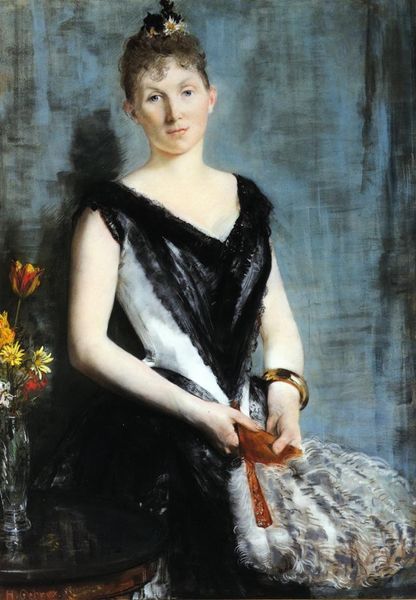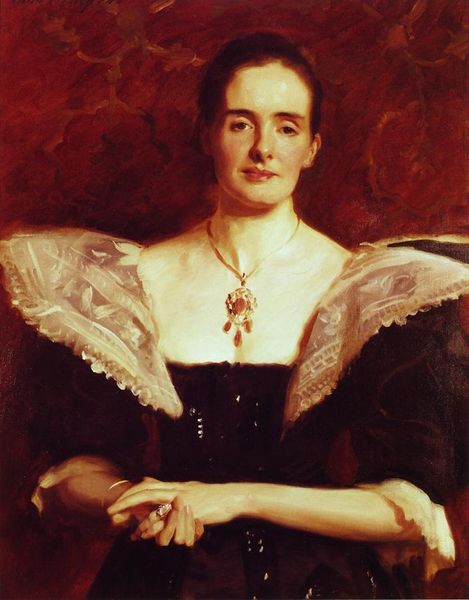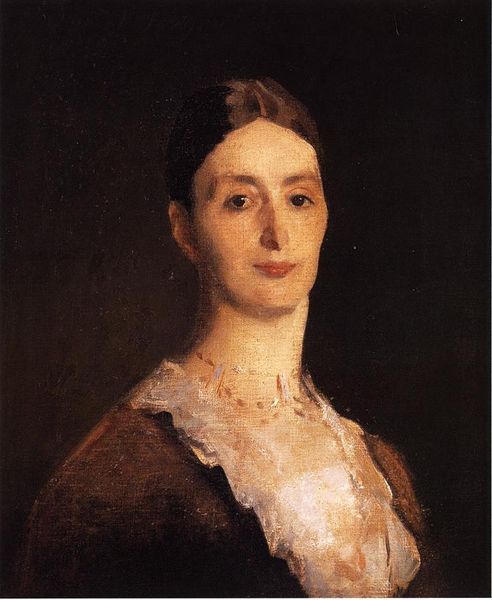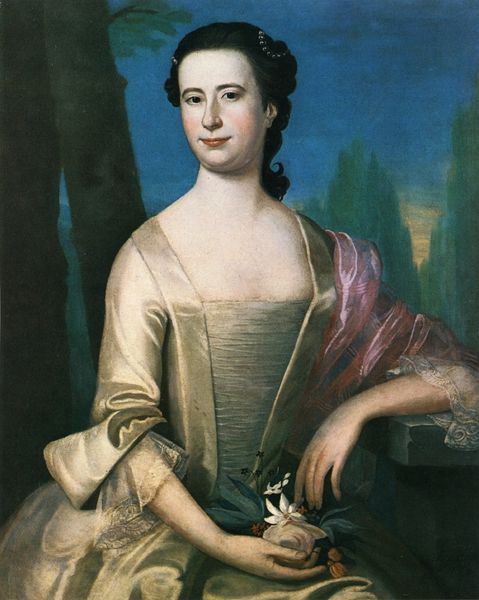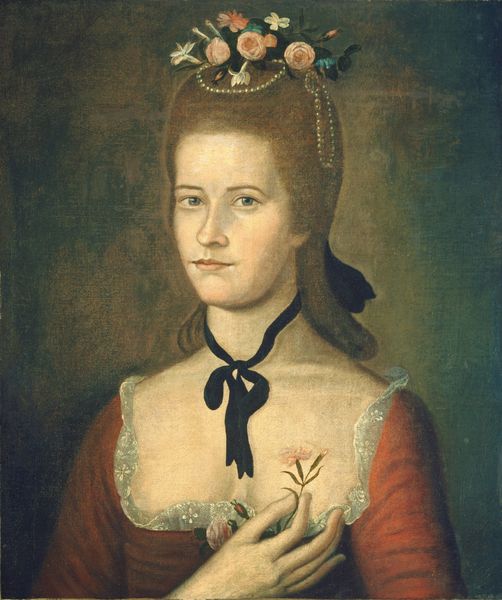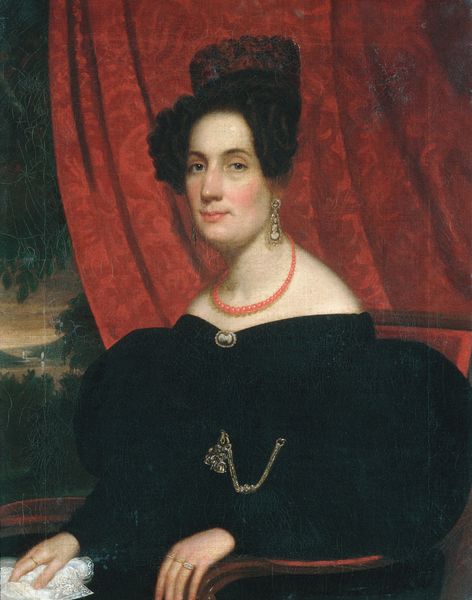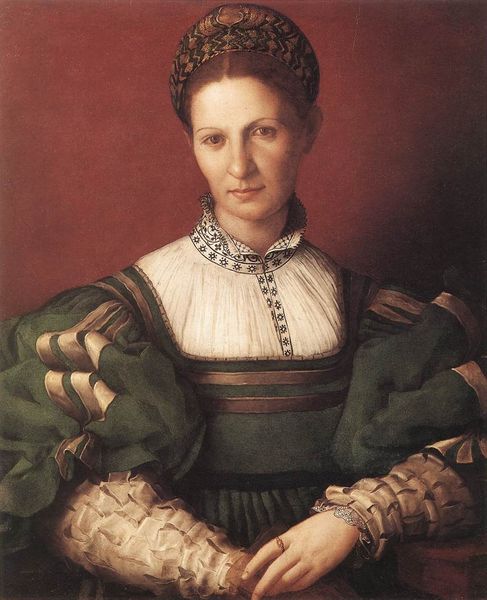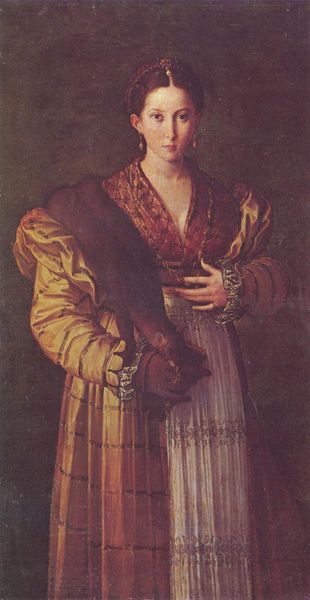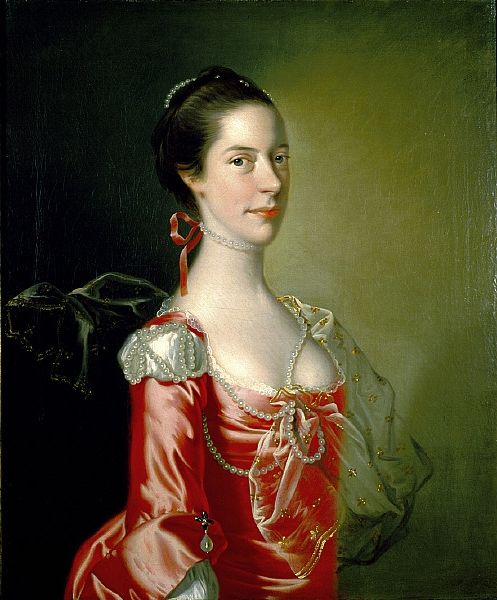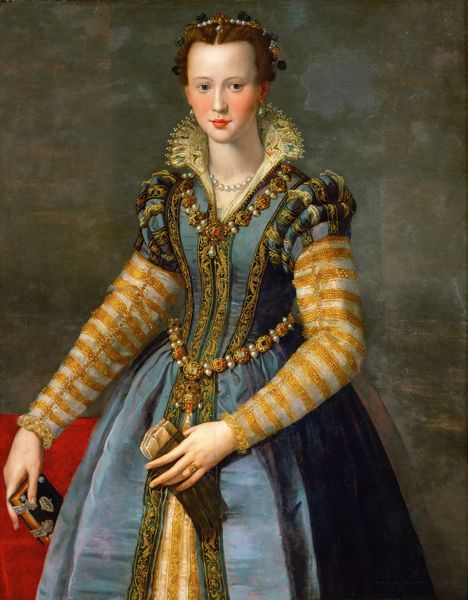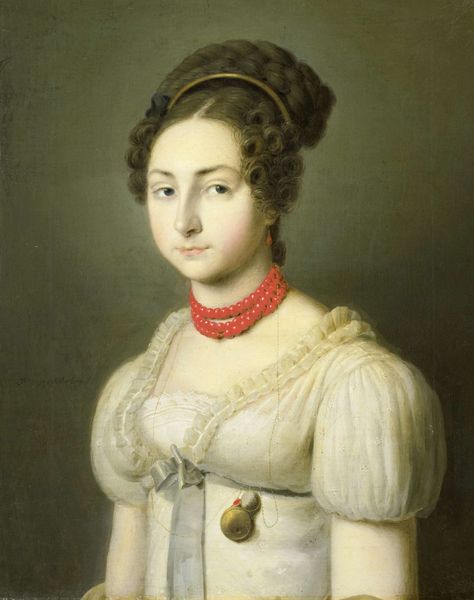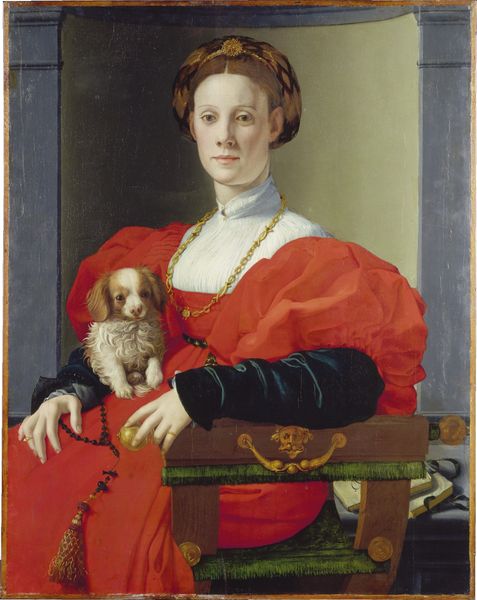
Dimensions: 90 x 63 cm
Copyright: Public domain
Editor: This is Giovanni Fattori’s "Lady with a Fan," painted in 1866 using oil. It’s rather striking how simply she’s presented. There’s a directness in her gaze that's really compelling. What can you tell me about this piece? Curator: It's important to look at Fattori's social milieu to understand this work. Fattori, an Italian artist associated with the Macchiaioli movement, often engaged with scenes of everyday life and Risorgimento patriotism. Consider this: How might a seemingly simple portrait, such as this, function within the context of newly unified Italy and its aspirations? Editor: That’s interesting. I wouldn’t have immediately thought of Italian unification. Does her plainness perhaps indicate a shift away from aristocratic decadence? Curator: Precisely! There's a move towards portraying bourgeois values and a quiet dignity, a deliberate turning away from the opulence and overt displays of wealth associated with pre-unification aristocracy. The black dress and simple fan are quite telling. The fan itself is a symbol. What did a fan usually represent? Editor: Often coquetry or secrets, right? But this one feels more restrained. Curator: Exactly. The fan, normally an item for flirtation, here almost conveys modesty, subtly pointing to the role of women within the new Italian social structure. Note how she doesn't command the viewer’s gaze. Instead, it meets yours. The plain background removes almost all markers of traditional power. Editor: I see! So, it's less about individual beauty and more about embodying national identity? Curator: In a sense, yes. It makes me wonder what this portrait would signify displayed in the public galleries and exhibitions of the era. Its subtle message promoting a form of moral authority and national pride would make a powerful statement to diverse viewers, creating discourse around contemporary socio-political identity. Editor: That completely changes how I view the artwork. Now I see it as less a straightforward portrait and more a statement about the times. Curator: And that’s why art history is important. It illuminates how artworks participate in broader cultural conversations. It highlights how a painting in a museum engages a modern audience and communicates to individuals in vastly different contexts.
Comments
No comments
Be the first to comment and join the conversation on the ultimate creative platform.
